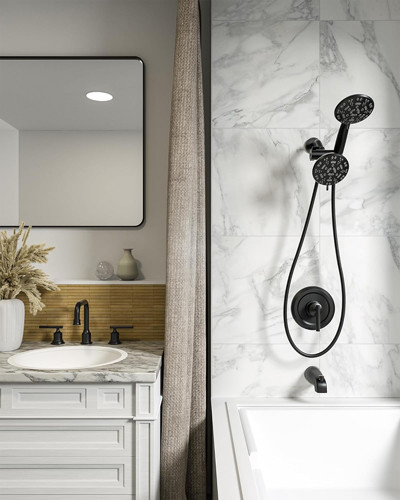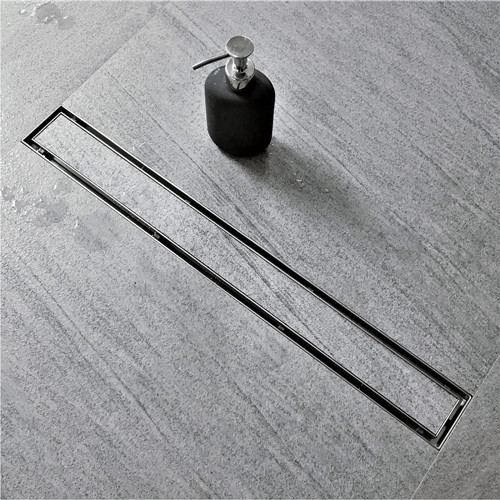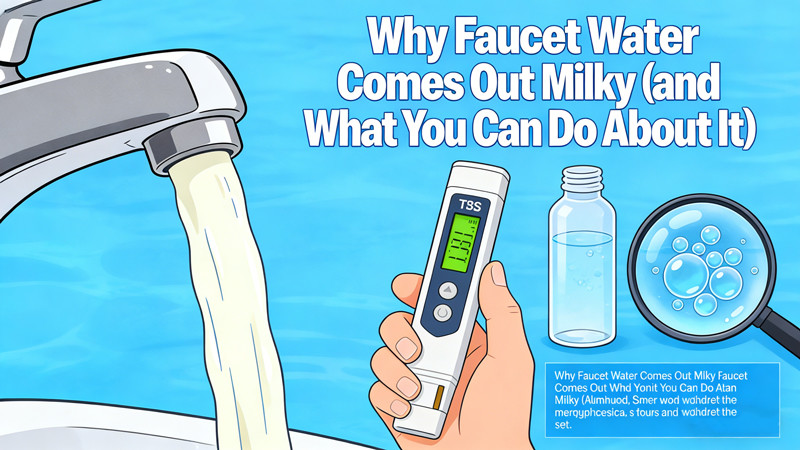
Shower and tub grab bars are essential safety features that provide support for individuals of all ages, especially those with mobility challenges. Properly installed grab bars reduce the risk of falls, improve independence, and make bathrooms safer for everyone. However, the effectiveness of these safety devices depends on their placement. The correct positioning ensures that grab bars are functional, secure, and easy to use when needed. In this post, we’ll explore the best practices for placing shower and tub grab bars to maximize safety and accessibility.
Why Proper Placement Matters
Grab bars are designed to assist in steadying oneself while getting in and out of a tub or shower, reducing the risk of slipping or losing balance. Improper placement can render the grab bars ineffective, increase the risk of injury, and may even lead to discomfort when attempting to use them. Whether you’re installing grab bars for yourself, a loved one, or a client, thoughtful placement is key to ensuring they are both practical and safe.
1. Height Matters: Standard Guidelines
One of the first things to consider when placing grab bars is their height. While it’s important to accommodate personal preferences and needs, there are general guidelines that apply to most users.
- Shower Wall Grab Bars: The typical recommendation for grab bars in the shower area is to install them at a height of 33 to 36 inches from the floor. This height is ideal for most users, providing ample leverage while standing or sitting. It also allows individuals to use the grab bars to pull themselves up or maintain balance while showering.
- Bathtub Grab Bars: When installing grab bars for tubs, aim for a height of 9 to 12 inches above the tub rim. This height helps people stabilize themselves when getting in or out of the tub. If the tub is deeper or has a high edge, a higher grab bar placement may be necessary.
- Adjusting for Individual Needs: If the user is taller or shorter than average, or if they are using a wheelchair or walker, you may need to adjust the placement of the grab bars. It’s always best to tailor the installation to the user’s specific needs, ensuring that the grab bars are within easy reach and offer sufficient support.
2. Positioning for Maximum Support
Grab bars should be placed where they will offer the most support and assist with common movements in the shower or tub. Here are some ideal placement points to consider:
- Vertical Grab Bars: A vertical grab bar next to the entrance of the shower or tub is essential. It helps individuals stabilize themselves as they step in or out, offering a firm point of support during the transition. It’s best placed near the side of the tub or the shower entrance.
- Horizontal Grab Bars: Horizontal grab bars are typically used along the shower wall to provide support while standing or maneuvering inside the shower. They are particularly helpful for users who need assistance while adjusting their position or turning in the shower.
- Diagonal or Angled Grab Bars: If you are installing multiple grab bars, consider placing a diagonal bar between two parallel walls or across the corner of a tub or shower. These angled bars offer both vertical and horizontal support, helping users maintain stability in various positions.
- Near Shower Controls and Bench Seating: Install grab bars near shower controls or any built-in seating. If the shower has a built-in bench, a grab bar should be positioned near the seat to assist with getting up and down. This ensures that the user can comfortably sit and stand without losing their balance.
3. Consider Wall Studs for Secure Mounting
Grab bars are only effective if they are securely attached to the wall. This is why wall studs should be your primary focus when installing grab bars. Hollow drywall or plaster does not provide sufficient support, so it’s critical to mount grab bars to solid structures such as wall studs.
- Use a Stud Finder: A stud finder is a tool that will help you locate the studs in your bathroom walls. Make sure to mark the stud locations clearly before installing grab bars. In areas where studs are not available where you need them, you can use a grab bar that comes with specialized anchors designed for hollow walls, or you may need to add additional blocking behind the drywall.
- Installation Techniques: Most grab bars come with instructions detailing the correct installation process. Follow these instructions carefully to ensure the grab bars are mounted securely. If in doubt, consider hiring a professional to install the grab bars properly, especially if you are uncertain about locating the studs or using anchors.
4. Strategic Placement for Ease of Use
In addition to height and positioning for safety, consider the ease of use when placing grab bars. The goal is for the user to feel confident and secure when using the grab bars.
- Grip Consideration: Choose grab bars with a comfortable grip, such as those with textured finishes or rubberized coatings. The material and diameter of the grab bar should allow the user to hold it securely, even when their hands are wet or soapy.
- Multiple Grab Bars for Different Movements: Depending on the layout of the bathroom, it may be necessary to install multiple grab bars in different areas. This might include a grab bar near the entrance to the shower, one near the shower controls, one across the tub rim, and even along the back wall. The idea is to create a series of support points that allow the user to maintain their balance through every stage of the shower or bath process.
- Accessibility for Wheelchair Users: If you’re designing a bathroom for a wheelchair user, consider installing horizontal grab bars at wheelchair-accessible heights, usually around 30 to 36 inches. You may also need to install grab bars at the front of the tub or shower to assist with transfers from the wheelchair.
5. Safety Tips to Keep in Mind
While grab bars are essential for safety, there are additional considerations to keep in mind during installation:
- Avoid Placing Grab Bars Near Shower Doors: Installing grab bars too close to shower doors or curtain rods can make them difficult to reach. Ensure the grab bars are placed far enough away from the door or curtain to be easily accessible.
- Check for Obstructions: Be mindful of other bathroom fixtures, such as faucets or shelves, when positioning grab bars. The grab bars should not interfere with the use of other elements in the bathroom.
- Test the Grab Bars After Installation: Once installed, test the grab bars for stability and strength. Ensure they can support the intended weight, and check for any movement or looseness. If needed, tighten the screws or bolts to ensure secure mounting.
Conclusion
Grab bars are an invaluable addition to any bathroom, enhancing safety and making everyday activities easier for people with limited mobility or those at risk of falling. By carefully considering height, positioning, wall mounting, and accessibility, you can ensure that your shower and tub grab bars provide optimal support and security. Proper placement helps users maintain balance, feel confident, and use the bathroom independently, making it an essential aspect of bathroom design and safety.
 WOWOW Faucets
WOWOW Faucets






